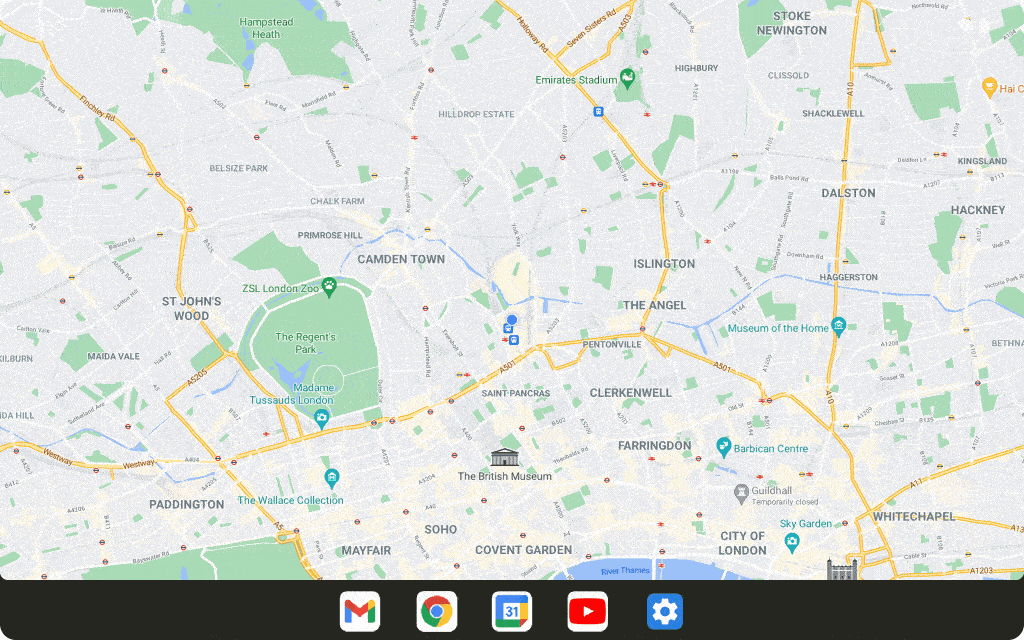Google announces Android 12L
Google has just released Android 12 for Pixel smartphones and its hardware partners, but that was no deterrent to announcing its Android 12L upgrade.
Much has been speculated about Android 12.1, which was found in the Android Open Source Project (AOSP) code. This speculation already brought several important pieces of information that were confirmed in the Android 12L announcement.
The system is aimed at devices with large screens (tablets) and folding devices. Another highlight is the similar appearance to ChromeOS (Google’s desktop operating system).
Check in this article all the news of the newest operating system from Google!

Taskbar
In this new version of Android, Google has focused on focusing on a multitasking system, aimed at large screen devices, which are tablets and folding devices.
This includes being able to use multiple apps in split-screen mode, as this has become more noticeable. For the feature to run, the app needs to be in the taskbar at the bottom of the screen. After that, you just need to drag the desired application icon anywhere,
Check the example below:

There’s also a new compatibility mode that will force unoptimized apps to appear as phone apps, in a single column, rather than scattering across the entire screen as is the case with most Android apps.
According to Google’s own Android 12L timeline, it’s possible that after the initial release, we’ll have some beta system updates.
Foldable Pixel
There are rumors that Google would be working on its first folding device, which could be released later in the year 2021. The phone would have a design inspired by the Pixel 6 pro.
However, with Android 12 being just released, it’s likely that Google will keep its first collapsible phone until the 12L is officially released.
This is a strong show that Google is serious about folding phones and tablets that run its operating system.
Users have been complaining for years about Android’s lack of personalization for tablets, and finally, the Android 12L fixes these issues and simplifies how developers can improve their apps for larger screens.
Android 12L layout
The new UI is considered more refined, and this is confirmed by some new tweaks in important parts like notifications, lock screen, overview, home screen, among others.
On-screen sizes above 600 dpi, the notification space, lock screen, and other spaces will now use a two-column layout to make use of the extra space that was previously unfilled.

These two column layouts will show more information and be very easy to use. The apps have also been optimized for folding devices and Chrome OS devices.
The tech giant, which currently focuses on tablets, folding and ChromeOS devices running the Android 12L, later also plans to open up the Android Beta for Pixel devices.
Compared to normal screen smartphones, the new Android 12L will make the best use of the extra space to offer its users a new UI experience.
It will feature a new taskbar that will allow users to instantly switch to their favorite apps, as well as a two-column layout for notifications and lock screen.
Android 12L for tablets, folding and ChromeOS devices also help improve the appearance of apps by default.
For manufacturers, the Android 12L will offer customizable letterboxing to enable color options and more.
In addition to the big-screen features, Android 12L also comes with a handful of new developer APIs.
Google said, “We were careful not to introduce major changes to your apps, so we don’t require apps to target 12L to meet Google Play requirements.”
The Android owner also added, “To make the split-screen mode a better experience on Android 12 and later, we’re helping users by automatically enabling all apps to go into a split-screen mode, regardless of whether the apps are resizable.”
iPadOS
Android 12L aims to address the UI deficiencies of the Android OS on large-screen devices, and it’s something Android fans have long come to expect from Google.
Apple’s iPad is often touted as having a much more tablet-optimized UI, thanks to Apple’s tablet-focused iOS variant, which it naturally calls iPadOS.
Android 12L is effectively Google’s answer and is much better suited for big-screen devices.
Android 12L release
Google claims that the system will have a final release date sometime after February 2022, but it has not made a specific release date clear.
The first beta versions of the 12L arrive this year and, even being aimed at folding and large screens, the first to receive are those that are part of the Pixel line. Here is the list below:
- Pixel 6 Pro;
- Pixel 6;
- Pixel 5a (5G);
- Pixel 5;
- Pixel 4a (5G);
- Pixel 4a;
- Pixel 4;
The tech giant is working with OEM partners to bring the new update to users. The company also confirmed that the Android 12L developer preview will arrive first on the Lenovo Tab P12 Pro.
12L is currently available for developers to start building and testing their apps using the Android 12L emulator through Android Studio.
Google is encouraging developers to test their apps and prepare them for the new version of the OS.
Did you like to know what’s new on Android 12L?
Did you manage to enjoy our article about what’s new in Android 12L? So, leave a comment saying what you think of Google’s new operating system and what you think of our article, and come check out all about iOS 15!




